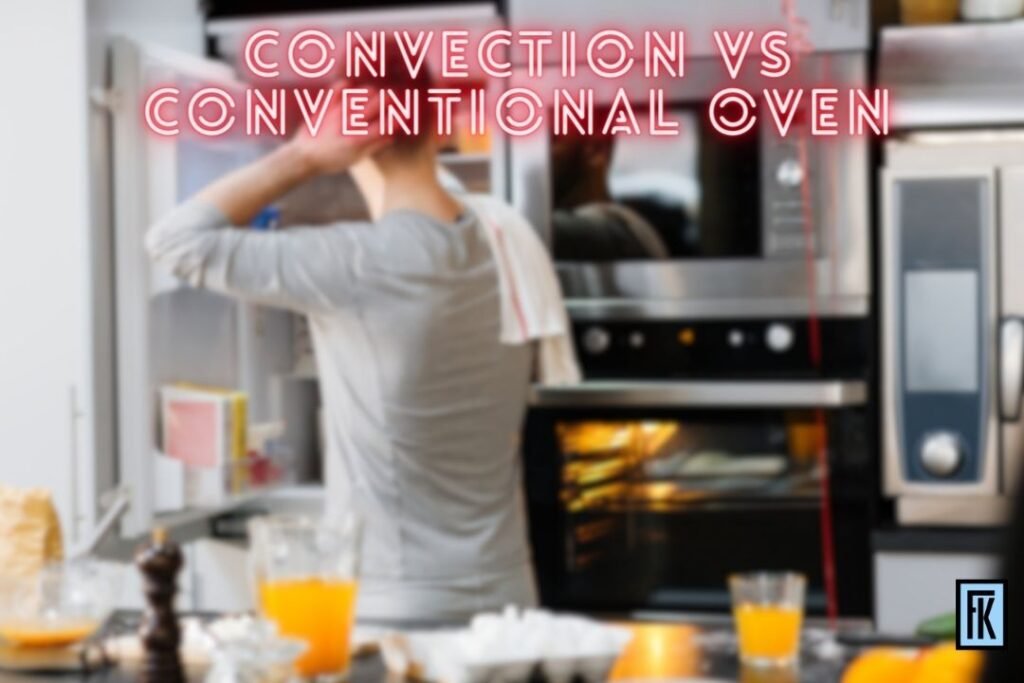
Conversely, when comparing conventional vs convection oven, convection ovens use fans to circulate hot air throughout the oven cavity, resulting in faster and more even cooking. Conventional ovens feature heating elements on the top and bottom of the oven cavity. The circulating air reduces hot spots and promotes browning while allowing for multiple racks to be used simultaneously without flavor transfer.
To ensure we provide you with the most precise and dependable information, our study consisted of a comprehensive comparison of both oven types including Heating Methods and Effects on Cooking, efficiency in energy consumption as well as Impact on Food Texture and Browning. We consulted culinary experts, reviewed manufacturer specifications, and gathered insights from everyday users to build a comprehensive list of surprising revelations about conventional vs convection oven.
This helpful guide will make it easier for you to decide whether to go in favor of the conventional vs convection oven. Well then, sit tight as we unveil the shocking secrets.
Conventional ovens:
A conventional oven, also known as a regular oven, is a cookware having heating elements at the top and bottom of the cooking cavities. It emits heat from the elements and covers the food hence cooking. A fan or circulation system for even heat distribution, unlike other ovens, is missing in conventional ovens. Conventional ovens are usually versatile enough to suit a variety of cooking techniques including baking, roasting and broiling. If you can tell someone the major differences then that is how you know how to tell conventional vs convection oven.
These can be used to cook various foods including bread, pastries, meats and casseroles. Conventional ovens are described as easy-going appliances that generally take a bit longer to cook compared to convection.
Nonetheless, it is important to note that conventional ovens, including countertop convection oven still maintain a significant presence, especially in older or simpler models.
Convection ovens:
A convection oven is a modern cooking appliance that uses a fan and exhaust system to evenly distribute hot air throughout the oven cavity. This is different from traditional ovens that use stationary heat sources. So, you need to know the differences first then you should go how to tell conventional vs convection oven. The circulating hot air ensures that all areas of the oven are reached, resulting in efficient and consistent cooking.
Convection ovens are highly advantageous when it comes to baking, roasting, and broiling. This is because they offer precise and consistent heat distribution, ensuring even cooking. They also provide greater control over the cooking process, allowing for more precise and desired outcomes. It is worth mentioning, however, that convection cooking may also necessitate changes to cooking instances and temperatures. Additionally, not all recipes or foods are suitable for convection baking.
To sum up, convection ovens are important for home cooks and chefs. One can tell conventional vs convection oven difference is that the latter enables quick and more intensive cooking, which leads to better culinary outcomes. A convection oven vs regular oven also acts as a basic food cook though through the use of different ways.
Key differences between conventional vs convection oven:
– Heating methods and their effects on cooking time and temperature.
– Comparison of energy efficiency between conventional vs convection oven.
– Impact on food texture and browning.
| Aspect | Conventional Oven | Convection Oven |
| Heating Methods and Effects on Cooking | Relies on radiant heat from top and bottom elements | Utilizes a fan for even hot air circulation |
| Time and Temperature Effects | May have uneven cooking; requires rotation of trays | Promotes even cooking; reduces overall cooking time |
| Energy Efficiency | Generally consumes more energy due to longer cooking times | More energy-efficient, especially for shorter cooking durations |
| Impact on Food Texture and Browning | Variability in browning, especially in larger or multiple dishes | Consistent browning; enhances texture and appearance |
Pros and Cons of Conventional Ovens
| Aspect | Conventional Ovens |
| Pros | |
| Reliable and Time-Tested | Well-established technology with a proven track record. |
| Versatility | Suitable for a wide range of cooking and baking tasks. |
| No Fan Noise | Operates quietly without the noise of a convection fan. |
| Cons | |
| Uneven Cooking | May experience uneven cooking, requiring tray rotation. |
| Longer Cooking Times | Generally takes longer to cook compared to convection. |
| Potential Hot Spots | Hot spots may develop, affecting dish consistency. |
Pros and Cons of Convection Ovens
| Aspect | Convection Ovens |
| Pros | |
| Even Cooking | Consistent cooking results due to hot air circulation. |
| Faster Cooking | Reduced cooking times for most dishes. |
| Energy Efficiency | More energy-efficient, especially for shorter durations. |
| Cons | |
| Learning Curve | Requires adjustment to cooking times and temperatures. |
| Fan Noise | The fan can produce some noise during operation. |
| Higher Cost | Generally more expensive than conventional ovens. |
Which one is right for you?
When choosing between a conventional and a convection oven, several factors come into play. Consider the following aspects:
– Consideration of cooking preferences and habits.
– Available space in your kitchen.
– Budget considerations.
| Consideration | Conventional Oven | Convection Oven |
| Cooking Preferences and Habits | Ideal for traditional cooking methods, such as baking and slow roasting. | Suited for those who prioritize even cooking, faster cooking times, and versatility in cooking methods. |
| Available Space in Your Kitchen | Takes up less space as they typically come in standard sizes. | May require more space due to the fan and additional components; consider available kitchen space. |
| Budget Considerations | Generally more budget-friendly than convection ovens. | Tends to be more expensive due to added technology and features. Consider your budget constraints. |
Conclusion
Finally, conventional vs convection ovens have varied advantages and disadvantages. Unlike conventional ovens, which are simple and reliable, a convection oven allows for faster cooking that is also more uniform. Finally, it all comes down to your cooking needs and style, the layout of the kitchen, and of course budget. This blog post detailed the differences that would help you select and improve your experience.
I hope I covered all the necessary questions regarding How to tell conventional vs convection oven
Check our another article on best roaster oven.
FAQ’s:
How do I know if I have a convection oven?
Inside the oven cavity of convection ovens is a fan. This fan blows hot air ensuring that the food is cooked evenly within the oven. And if you ever notice a fan in your oven, it is likely that the oven being referred to here is a convection oven. Moreover, certain ovens feature an “convection” mode on the control panel.
What is the temperature difference between convection and a regular oven?
The fan in the convection oven circulates heat to distribute it more uniformly and thus the temperature may be a little lower than with regular oven. Some recipes also recommend lowering the temperature by 25 degrees Fahrenheit or around 14 degrees Celsius with convection ovens. Nonetheless, it is important you follow the manufacturer’s instructions on your particular oven model.
Is a convection oven better than a conventional oven for cookies?
Preference between a conventional vs convection oven for baking cookies depends on personal preference and the desired cookie outcome. In general, convection ovens’ uniformly heat distribution ensures cookies bake well and remain consistent. The tray also enables one to bake quite a number without thinking much of the uneven baking. On the other hand, it should be noted that you might want to test and alter temperatures and baking times regarding your particular oven and cookie recipe.
What is the disadvantage of a convection oven?
Though convection ovens have numerous advantages, they also possess a few weaknesses. The first common concern is that they can become noisy because of the running fan. In addition, convection baking can also be associated with a learning curve because of the changes that are needed in terms of modifying temperature and cooking time to match conventional recipe instructions. However, others also see that some recipes such as custards or soufflés may fail in a convection oven because of the accelerated airflow.









